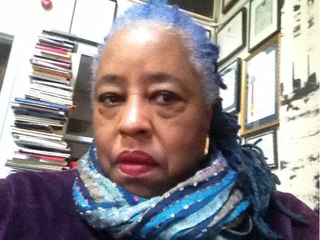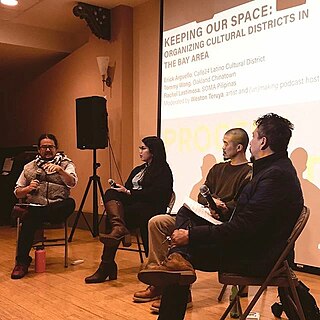Steven Pippin is an English photographer and installation artist. Pippin works with converted or improvised photographic equipment and kinetic sculptures which are often based on physical models and are metaphors for social mechanisms.

Jonathon Keats is an American conceptual artist and experimental philosopher known for creating large-scale thought experiments. Keats was born in New York City and studied philosophy at Amherst College. He now lives in San Francisco and Italy.
Wally Bill Hedrick was a seminal American artist in the 1950s California counterculture, gallerist, and educator who came to prominence in the early 1960s. Hedrick's contributions to art include pioneering artworks in psychedelic light art, mechanical kinetic sculpture, junk/assemblage sculpture, Pop Art, and (California) Funk Art. Later in his life, he was a recognized forerunner in Happenings, Conceptual Art, Bad Painting, Neo-Expressionism, and image appropriation. Hedrick was also a key figure in the first important public manifestation of the Beat Generation when he helped to organize the Six Gallery Reading, and created the first artistic denunciation of American foreign policy in Vietnam. Wally Hedrick was known as an “idea artist” long before the label “conceptual art” entered the art world, and experimented with innovative use of language in art, at times resorting to puns.

Stephen De Staebler was an American sculptor, printmaker, and educator, he was best recognized for his work in clay and bronze. Totemic and fragmented in form, De Staebler's figurative sculptures call forth the many contingencies of the human condition, such as resiliency and fragility, growth and decay, earthly boundedness and the possibility for spiritual transcendence. An important figure in the California Clay Movement, he is credited with "sustaining the figurative tradition in post-World War II decades when the relevance and even possibility of embracing the human figure seemed problematic at best."
David Kenneth Ireland was an American sculptor, conceptual artist and Minimalist architect.
Kara Maria is an American visual artist working in painting and mixed media. Her work reflects on political topics – feminism, war, and the environment. She borrows from the broad vocabulary of contemporary painting; blending geometric shapes, vivid hues, and abstract marks, with representational elements. She is based in San Francisco, California.

Ruth Aiko Asawa was an American modernist sculptor. Her work is featured in collections at the Solomon R. Guggenheim Museum and the Whitney Museum of American Art in New York City. Fifteen of Asawa's wire sculptures are on permanent display in the tower of San Francisco's de Young Museum in Golden Gate Park, and several of her fountains are located in public places in San Francisco. She was an arts education advocate and the driving force behind the creation of the San Francisco School of the Arts, which was renamed the Ruth Asawa San Francisco School of the Arts in 2010. In 2020, the U.S. Postal Service honored her work by producing a series of ten stamps that commemorate her well-known wire sculptures.
Fletcher C. Benton was an American sculptor and painter from San Francisco, California. Benton was widely known for his kinetic art as well as his large-scale steel abstract geometric sculptures.

Recology, formerly known as Norcal Waste Systems, is a waste management company headquartered in San Francisco, California. The company collects and processes municipal solid waste, reclaiming reusable materials. The company also operates transfer stations, materials recovery facilities (MRFs), a number of landfills, and continues to spearhead renewable energy projects. Recology is the largest organics compost facility operator by volume in the United States.
JB Blunk (1926–2002) was a sculptor who worked primarily in wood and clay. In addition to the pieces he produced in wood and ceramics, Blunk worked in other media including jewelry, furniture, painting, bronze, and stone.

Mildred Howard is an African-American artist known primarily for her sculptural installation and mixed-media assemblages. Her work has been shown at galleries in Boston, Los Angeles and New York, internationally at venues in Berlin, Cairo, London, Paris, and Venice, and at institutions including the Oakland Museum of California, the de Young Museum, SFMOMA, the San Jose Museum of Art, and the Museum of the African Diaspora. Howard's work is held in the permanent collections of numerous institutions, including the San Francisco Museum of Modern Art, the Oakland Museum of California, and the Ulrich Museum of Art.

Weston Teruya is an Oakland-based visual artist and arts administrator. Teruya's paper sculptures, installations, and drawings reconfigure symbols forming unexpected meanings that tamper with social/political realities, speculating on issues of power, control, visibility, protection and, by contrast, privilege. With Michele Carlson and Nathan Watson, he is a member of the Related Tactics artists' collective and often exhibits under that name.

George Herms is an American artist best known for creating assemblages out of discarded, often rusty, dirty or broken every-day objects, and juxtaposing those objects so as to infuse them with poetry, humor and meaning. He is also known for his works on paper, including works with ink, collage, drawing, paint and poetry. The prolific Herms has also created theater pieces, about which he has said, "I treat it as a Joseph Cornell box big enough that you can walk around in. It's just a continuation of my sculpture, one year at a time." Legendary curator Walter Hopps, who met Herms in 1956, "placed Herms on a dazzling continuum of assemblage artists that includes Pablo Picasso, Kurt Schwitters, Marcel Duchamp, and Joseph Cornell, as well as California luminaries Wallace Berman and Edward Kienholz." Often called a member of the West Coast Beat movement, Herms said that Wallace Berman taught him that "any object, even a mundane cast-off, could be of great interest if contextualized properly." "That’s my whole thing," Herms says. "I turn shit into gold. I just really want to see something I've never seen before." George Herms lives and works in Los Angeles.
Val Britton is an American artist, best known for her works on paper and installations. She creates abstract collage works using paper and other mixed media that reference the language of maps, network diagrams and astronomical photography. She lived in the San Francisco Bay Area for 14 years, and as of 2018, she lives in Seattle, Washington.
Jo Hanson (1918–2007) was an American environmental artist and activist. She lived in San Francisco, California. She was known for using urban trash to create works of art.

Terry Berlier is an artist and sculptor whose work addresses themes of the environment and queer practice. Her work incorporates kinetic and sound based media to address these themes.

Lori Kay also known as Lori Kay Stout, is an American artist, educator and activist based in the San Francisco Bay Area. She is known for her sculptures made of bronze, mixed media and recycled materials. Her work sometimes addresses issues of racial identity or mixed racial identity or issues of environmental awareness. She is also the owner of the Lupin Lodge of Los Gatos, a clothing-optional resort.
Jenny Odell is an American multidisciplinary artist, writer, and educator based in Oakland, California. She taught Internet art and digital/physical design at Stanford University from 2013 to 2021. She wrote TheNew York Times best-selling book How to Do Nothing: Resisting the Attention Economy (2019).
Rodney Ewing is an African-American interdisciplinary visual artist. He lives in New York City as of 2022, and formerly lived in San Francisco, California.
Carrie Hott is an interdisciplinary artist, researcher, and educator based in Oakland, California. Hott’s multidisciplinary projects often take the form of multi-media installations that incorporate drawings, prints, books, sound, video or performance in sculptural settings.








